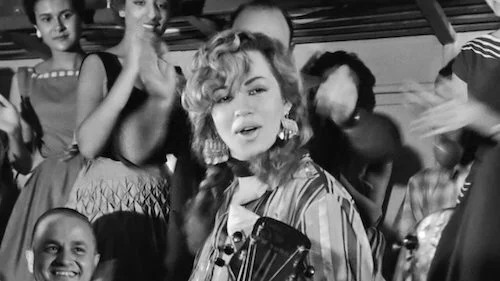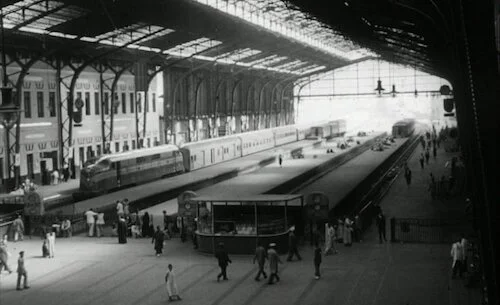The World of Movies: Cairo Station
Written by Rachael Crawley
The World of Movies is a series that explores global cinema, drawing on films from many countries, industries and eras. This week, people and their stories intersect in the centre of Cairo.
Will definitely contain spoilers.
A note about transliteration – English spellings of the characters’ names may differ between sources, particularly during different time periods. I have consulted multiple written pieces, and have decided to go with the most widely accepted versions.
Cairo Station (Youssef Chahine, 1958) pushed boundaries for a movie of its era; taking influence from Neorealism, it showcased the social changes of Egypt at the time, and treated its material with unexpected frankness. It was Egypt’s first-ever submission to the Academy Awards for Best Foreign Language Film (as it was known then). In the 1950s, Egypt had one of the largest film industries in the world. Cairo Station is a fine example of its cinematic “Golden Age”.
A lot happens in this movie’s hour-and-a-quarter runtime. We focus on the city’s central train station, where the local newsagent, Madbouli (Hassan el Baroudi), explains the strange things that happen in a place where thousands of passengers from around the region congregate. His story is of a poor man, Qinawi (played by Chahine), struggling to get by. Madbouli gives the man a place to sleep and a job. When the movie opens, Qinawi is gone, leaving a shed covered in pin-up images. The movie proceeds to explain what happened.
We meet the fun-loving drink seller Hanuma (Hind Rostom), engaged to Abu Siri (Farid Shawqi), a luggage handler who is trying to form a union – but who can also be a bully. The station’s vendors and staff are quite friendly with each other, which gives the station the impression of being its own bustling community. Characters watch out for each other, keep track of each other’s lives, and experience important moments all within the station. The result is a busy movie. Even as the main story plays out, the film has time for side characters and anecdotes, always paying attention to the station’s daily life. Included in the bustle are references (however fleeting) to the social changes and trends in Egypt at the time, as passengers come through from all parts of society. It is a film of constant action, even if it is audible offscreen or occurring on the sidelines.
Cairo Station.
From the start, the movie appears to be continually staring at women; the camera lingers on Hanuma and other female characters, and they are placed in costumes that stand out within the scene. What seems to be a simple aesthetic choice, possibly meant to build a striking scene or to showcase a beautiful actress, takes on a creepier tone as the film goes on. With time, the viewer realizes that this style is deliberate, meant to demonstrate a much more sinister perspective. This is accentuated by Chahine’s performance as Qinawi, which emphasizes his watchful manner. The camera, too, focuses frequently on his staring eyes. This man is offputting, even before he begins to cross the line. As the movie continues, he becomes a man unhinged.
Qinawi’s obsession with Hanuma moves to harassment, and then to violence, resulting in the stabbing of Hanuma’s friend. As Qinawi drifts further from reality, and Hanuma unknowingly heads into danger, the people of the station gradually realize what is happening in their midst. The final twenty minutes are terrifying. In these moments, the film becomes a true horror movie, a confrontation between the killer and the young woman, as the community does all they can to save her. The tension built in this sequence could have been part of a horror film twenty years down the line – though it is not gory, it is dynamically filmed and holds the audience’s attention.
Cairo Station.
Controversial on its release, Cairo Station feels relevant even today. Visually interesting and full of motion, it holds a lot for the viewer to unpack. It is primarily about Qinawi’s destructive fixation and its consequences, but demonstrates the storytelling potential of a place where hundreds of paths cross every day. In little more than an hour, the movie presents a gripping personal tale, while showing us a glimpse of a particular time and place – the changing society of Egypt in the 1950s. This lively, captivating film is well worth a viewing.
Rachael Crawley holds a Master's Degree in Film and Photography Preservation and Collections Management from Ryerson University, and has worked with film in Canada and in Europe. She adores language and cinema, and how these subjects interact with each other.





